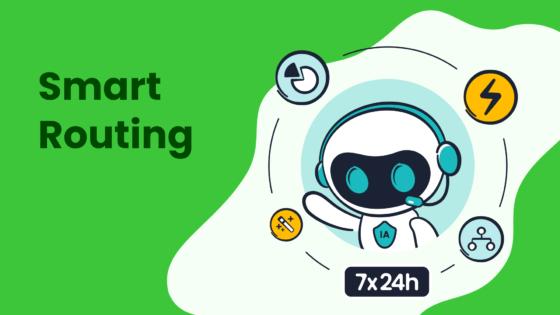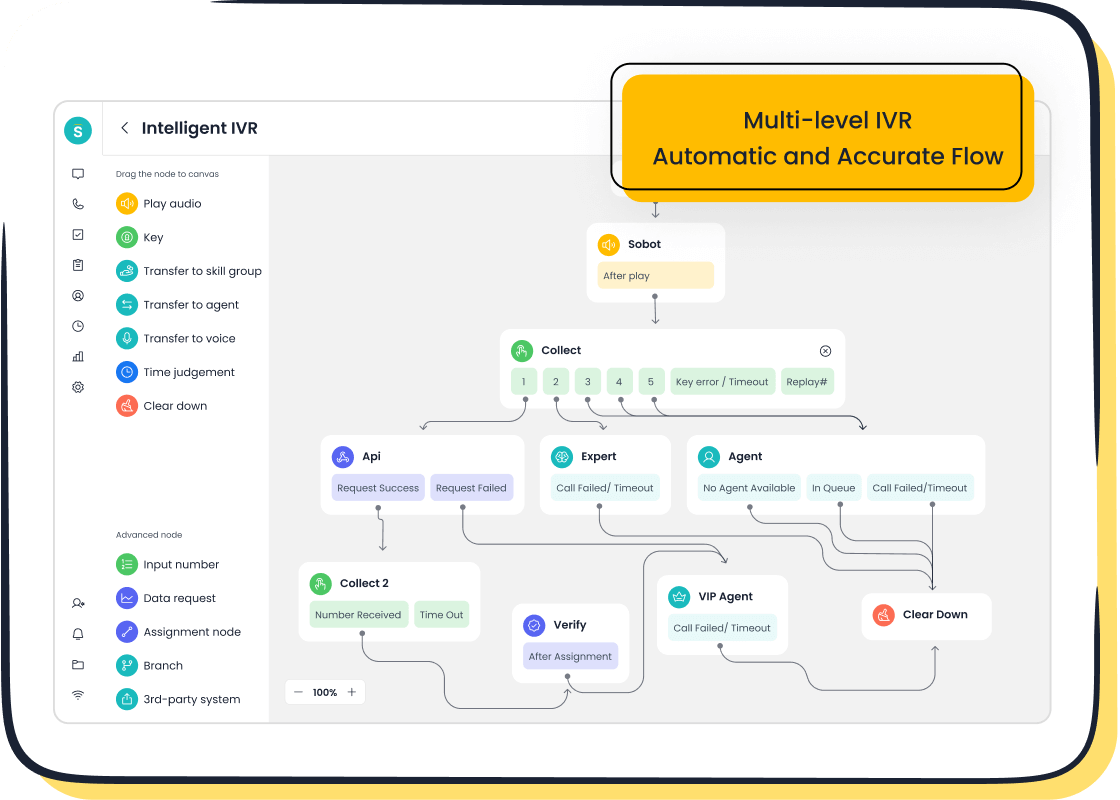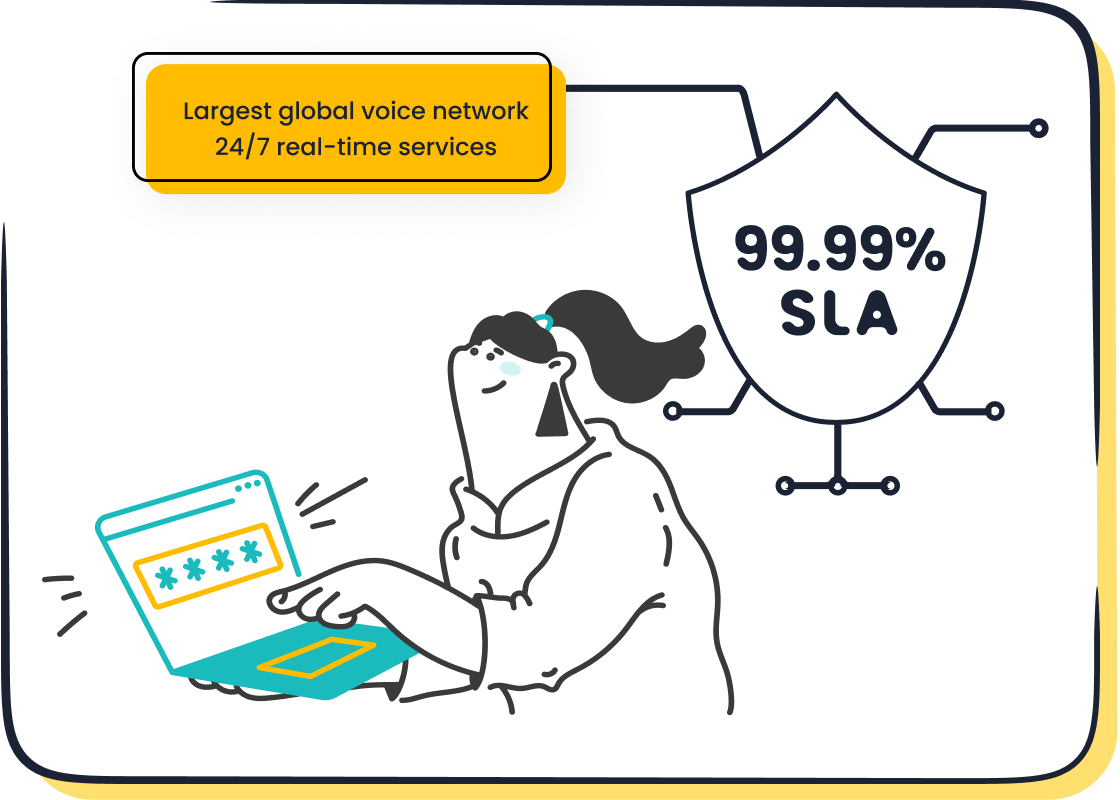How Text-to-Speech Technology Works and Its Benefits

Imagine a world where written words come alive as spoken language. That’s exactly what Text To Speech (TTS) technology does. It transforms text into natural-sounding speech using AI and linguistic analysis. This innovation isn’t just about convenience—it’s a game-changer for accessibility. For instance, healthcare providers use it to deliver medication instructions, while educators rely on it to support diverse learning needs. Industries like customer support and e-learning are also embracing TTS to boost productivity and inclusivity. Companies like Sobot are leading the way, integrating TTS into their solutions that enhance customer interactions and streamline operations.
What Is Text-to-Speech Technology?
Definition and Core Components
What is text-to-speech (TTS)?

Text-to-speech (TTS) technology is a fascinating innovation that converts written text into spoken words. It uses artificial intelligence to analyze text and generate human-like speech. You’ve probably encountered TTS in tools like screen readers or virtual assistants like Siri and Alexa. These systems make digital content accessible to everyone, including individuals with visual impairments or reading difficulties. TTS is also a key feature in customer service platforms, such as Sobot’s Voice/Call Center, where it powers AI voicebots to handle customer inquiries efficiently.
Key components: Text input, processing, and speech output
TTS technology relies on three main components to work seamlessly:
- Text Input: This is where the system receives the text, whether it’s typed, scanned, or extracted from a document.
- Processing: Here’s where the magic happens. Linguistic analysis breaks down the text into phonemes (the smallest units of sound) and applies natural language processing to understand context, accents, and tone.
- Speech Output: Finally, speech synthesis converts the processed text into audio, creating a voice that sounds natural and engaging.
These components work together to deliver a smooth and lifelike speech experience, whether you’re listening to an audiobook or interacting with a customer service bot.
Evolution of Text-to-Speech Technology
From rule-based systems to AI-driven solutions
TTS technology has come a long way. Early systems relied on rigid, rule-based algorithms that produced robotic and monotone voices. But things changed with the introduction of AI-driven solutions. For example:
- Google DeepMind’s WaveNet (2016) revolutionized TTS by modeling audio waveforms, creating speech that sounded more natural.
- End-to-end models like Tacotron and Deep Voice simplified the process by generating speech directly from text input.
These advancements have made TTS more expressive and versatile, opening doors for applications in industries like e-learning, accessibility, and customer service.
Role of machine learning and neural networks in modern TTS

Modern TTS systems use machine learning and neural networks to mimic human speech. By training on large datasets of text and audio, these systems learn to replicate intonations, rhythms, and even emotions. This is why today’s TTS voices sound so lifelike. For instance, Sobot’s AI-powered voicebots leverage these technologies to provide personalized and efficient customer interactions, enhancing user satisfaction.
Did you know? Neural networks can now generate speech waveforms directly, improving the quality of synthetic voices. This means you can enjoy more natural-sounding audiobooks or seamless conversations with virtual assistants.
How Does Text-to-Speech Technology Work?
Text Analysis and Linguistic Processing
Breaking down text into phonemes and linguistic units
Text-to-speech technology begins with breaking down the text into smaller, manageable parts. This process involves several steps:
- Linguistic analysis: The system examines words, punctuation, and sentence structure. It expands abbreviations and calculates word durations for accurate timing.
- Text preprocessing: Raw text is transformed into a format suitable for speech synthesis. This includes converting numbers into words and handling special characters.
- Phonetic conversion: The text is converted into phonemes, which are the smallest sound units in speech.
- Prosody modeling: The system adjusts pitch, stress, and intonation to make the speech sound natural.
- Waveform generation: Finally, the processed data is turned into audio waveforms, creating the voice output.
These steps ensure that the text-to-speech conversion is smooth and produces human-like voices.
Contextual understanding using natural language processing (NLP)
Natural language processing (NLP) plays a crucial role in making text-to-speech tools smarter. It helps the system understand the context of the text, such as distinguishing between "lead" (a metal) and "lead" (to guide). NLP also enables the system to adapt its tone based on punctuation or sentence type. For example, a question will have a rising intonation, while a statement will sound more neutral. This contextual understanding makes text-to-speech models more effective in delivering natural and engaging speech.
Sound Generation and AI Integration
Synthesizing human-like speech with neural networks
Artificial intelligence has revolutionized text-to-speech generation. Neural networks, a type of AI, analyze linguistic components to produce speech that mimics human characteristics. These systems learn from massive datasets of text and audio, allowing them to replicate intonation, rhythm, and even emotional nuances. For instance, advanced models like WaveNet and Tacotron generate speech directly from text, capturing the subtleties of human communication. This makes interactions with AI voice generators feel more personal and lifelike.
Enhancing speech quality with machine learning models
Machine learning models have significantly improved voice quality in text-to-speech solutions. By using deep learning, these models can adjust pitch, rhythm, and emphasis dynamically. This results in more expressive and fluent speech. Modern advancements even allow for real-time speech generation, which is particularly useful in applications like gaming, virtual reality, and customer service. These improvements ensure that text-to-speech technology delivers practical applications across various industries.
Sobot's Role in Advancing TTS for Customer Service
Integration of TTS in Sobot's Voice/Call Center solutions

Sobot has seamlessly integrated text-to-speech technology into its Voice/Call Center solutions. The AI-powered voicebots in Sobot's platform use advanced TTS models to handle customer inquiries efficiently. These voicebots can understand and respond to customer needs in real time, offering a personalized experience. With features like multilingual support and intelligent call routing, Sobot ensures that businesses can serve diverse audiences effectively.
Benefits of AI-powered voicebots for customer interactions
Sobot's AI-powered voicebots bring numerous benefits to customer service. They automate repetitive tasks, reducing the workload for human agents. This leads to faster response times and higher customer satisfaction. For example, Weee!, an online supermarket, used Sobot's voice product to overcome language barriers and time zone challenges. The result? A 20% boost in agent efficiency and a 96% customer satisfaction score. Sobot's text-to-speech solutions demonstrate how AI can transform customer interactions.
Benefits of Text-to-Speech Technology
Accessibility and Inclusivity
Assisting individuals with visual impairments or reading difficulties
Text-to-speech software opens up a world of possibilities for individuals with disabilities. If you have visual impairments or struggle with reading, TTS tools can help you access information effortlessly. These tools convert written text into spoken words, allowing you to listen to content instead of reading it. Whether it’s navigating websites, reading emails, or consuming educational materials, TTS enhances accessibility across various applications. It’s also a reliable companion for people with dyslexia, offering an alternative way to absorb information without traditional reading challenges. Even non-native speakers benefit from improved pronunciation and comprehension, making TTS a versatile solution for diverse needs.
Enabling access to digital content for diverse audiences
Text-to-speech technology bridges the gap for audiences who might otherwise struggle to access digital content. Imagine government agencies delivering critical alerts in multiple languages or educators providing audio versions of textbooks for students with disabilities. TTS makes this possible. It converts text into speech, enabling users to consume content in their preferred language or format. For example, Sobot’s AI-powered voicebots use multilingual TTS capabilities to serve global audiences, ensuring inclusivity and accessibility for all.
Efficiency and Cost-Effectiveness
Automating repetitive tasks in customer service
Text-to-speech solutions streamline customer service operations by automating repetitive tasks. AI voice generators handle high volumes of inquiries, reducing the need for human agents and minimizing escalations. This efficiency translates into lower operational costs for businesses. Companies like Sobot leverage TTS in their Voice/Call Center solutions to maintain smaller teams while delivering exceptional service. By automating routine interactions, businesses save time and money, allowing them to focus on more complex customer needs.
Reducing costs in content creation and voiceover production
Text-to-speech technology has revolutionized industries like audiobook production and podcasting. It eliminates the need for traditional voiceover scheduling, significantly lowering production costs. With AI-driven TTS tools, you can create high-quality, multilingual content quickly and affordably. For instance, Sobot’s TTS-powered voicebots offer scalable solutions that enhance production capabilities while keeping costs in check. This makes TTS an invaluable resource for businesses looking to expand their creative possibilities without breaking the bank.
Personalization and Branding
Customizable voices for unique brand identity
A unique AI voice can set your brand apart. Text-to-speech apps allow you to create customizable voices that reflect your company’s personality. These voices enhance user experiences, deliver consistent messaging, and build trust with your audience. For example, Sobot’s AI-powered voicebots offer tailored vocal personas that align with your brand identity, ensuring every interaction feels personal and engaging.
Adapting speech styles to suit different customer needs
Modern text-to-speech tools adapt to diverse customer preferences. They support multiple languages, regional accents, and even code-switching for seamless communication. Businesses can use these tools to create custom voices that resonate with their audience. Sobot’s TTS solutions, for instance, dynamically adjust speech styles based on content type, providing tailored experiences that enhance customer satisfaction.
Applications of Text-to-Speech Technology
Customer Service and Support
Enhancing IVR systems with TTS for better customer experiences

Interactive Voice Response (IVR) systems powered by text-to-speech technology have transformed how businesses interact with customers. These systems use natural-sounding voices to guide callers, making the experience more engaging and less frustrating. With TTS, you can enjoy efficient self-service options like order tracking, payment processing, or account updates without waiting for a live agent. Multilingual support ensures accessibility for diverse audiences, while quick updates to IVR scripts keep information timely. For example, Sobot’s Voice/Call Center integrates TTS to handle high call volumes and deliver personalized responses, improving customer satisfaction during peak times.
Providing 24/7 automated assistance with Sobot's Voice/Call Center

Imagine needing help late at night and finding a friendly voice ready to assist. That’s the power of Sobot’s AI-powered voicebots. These bots use advanced text-to-speech solutions to provide round-the-clock support. They automate routine tasks like booking appointments or answering product inquiries, freeing up human agents for complex issues. Businesses benefit from reduced costs, while you enjoy faster resolutions. For instance, Weee! leveraged Sobot’s voice product to overcome language barriers and time zone challenges, achieving a 96% customer satisfaction score.
Education and E-Learning
Supporting students with learning disabilities through audio content
Text-to-speech tools are game-changers for students with learning disabilities like dyslexia. These tools convert written text into spoken words, making content more accessible. Features like adjustable reading speed and volume enhance the learning experience. Students with visual impairments can listen to course materials, while those with cognitive challenges benefit from simplified comprehension. TTS also supports online courses, ensuring no one gets left behind. By integrating TTS into e-learning platforms, educators can create inclusive environments where every student thrives.
Enabling language learning with TTS-powered tools
Learning a new language becomes easier with text-to-speech apps. These tools read content aloud, helping you grasp pronunciation and rhythm. They also provide auditory support that complements visual reading, improving comprehension. For example, TTS enhances word recognition and memory retention, allowing you to focus on understanding rather than decoding words. Sobot’s TTS-powered solutions can even adapt speech styles to suit different languages, making them ideal for multilingual education.
| Benefit | Description |
|---|---|
| Improves word recognition | Helps learners recognize words more effectively. |
| Increases attention and memory | Hearing text while reading enhances retention. |
| Focus on comprehension | Learners can concentrate on understanding. |
| Enhances engagement | Multisensory experiences keep learners interested. |
Healthcare and Accessibility
Delivering medical information in an accessible format
Text-to-speech technology ensures everyone can access critical medical information. It supports patients with visual impairments or low literacy levels by converting written instructions into natural-sounding speech. For example, TTS has improved medication adherence by 45% and reduced staff time spent explaining instructions by 40%. Sobot’s TTS solutions can deliver multilingual medical updates, ensuring inclusivity for non-native speakers. This approach enhances patient satisfaction and reduces confusion, making healthcare more accessible.
Assisting patients with speech impairments
For patients with speech impairments, TTS technology acts as a bridge to effective communication. It converts written text into spoken language, allowing patients to express themselves clearly. Imagine an elderly patient receiving discharge instructions through a TTS system. Her family could replay the instructions, ensuring perfect medication adherence. Sobot’s AI voice technologies provide user-friendly interfaces that cater to elderly patients and non-native speakers, improving interactions with healthcare providers.
Entertainment and Media
Creating voiceovers for audiobooks and podcasts
Have you ever listened to an audiobook that felt like the narrator was speaking directly to you? That’s the magic of text-to-speech technology. It has revolutionized how audiobooks and podcasts are created. AI voiceovers now bring stories to life with expressive, natural-sounding voices. This makes it easier for you to immerse yourself in captivating narratives, whether you’re enjoying a thrilling mystery or a motivational podcast.
For creators, text-to-speech tools simplify the production process. Here’s how:
- They eliminate the need for expensive recording sessions.
- Writers and publishers can produce content faster and more affordably.
This means more creators can share their stories with the world, and you get access to a wider variety of content. Plus, with customizable voices, text-to-voice technology ensures that every audiobook or podcast matches the tone and style of its message. Whether it’s a soothing bedtime story or an energetic talk show, TTS delivers the perfect voice.
Enhancing gaming experiences with dynamic voice synthesis
Gaming has become more immersive than ever, thanks to text-to-speech interfaces. Developers now use TTS to prototype dialogues and narratives quickly. Imagine testing how a character’s voice sounds before finalizing the script. This flexibility saves time and allows writers to experiment with different tones and styles to create the perfect fit for their game.
But it doesn’t stop there. Dynamic voice synthesis adds emotional depth to characters, making them feel more lifelike. You’ll notice how a villain’s voice conveys menace or how a hero’s tone inspires courage. TTS also improves accessibility for players with disabilities, ensuring everyone can enjoy the game. With advancements in text-to-speech technology, gaming worlds feel more engaging, inclusive, and alive.
🎮 Fun Fact: Some games now use TTS to generate real-time dialogue, creating unique interactions every time you play!
Industry-Specific Use Cases of Text-to-Speech Technology
Call Centers and Customer Support
Streamlining customer interactions with AI-driven voice systems
Text-to-speech technology has revolutionized how businesses handle customer interactions. It automates voice responses, making communication faster and more efficient. For example, TTS tools can handle routine inquiries like account details or FAQs, freeing up live agents to focus on complex issues. These systems also provide quick, personalized responses, ensuring customers feel valued. Multilingual capabilities allow businesses to serve international markets without needing native-speaking agents. Sobot’s Voice/Call Center solutions integrate TTS to deliver seamless, real-time assistance, helping businesses manage high call volumes while maintaining quality service.
Reducing wait times and improving customer satisfaction with Sobot's solutions
Nobody likes waiting on hold. With text-to-speech use cases like AI-powered voicebots, you can reduce wait times significantly. These bots handle repetitive tasks, such as order tracking or appointment scheduling, allowing human agents to address more pressing concerns. Sobot’s voice solutions excel in this area, offering 24/7 support and multilingual options. For instance, Weee! used Sobot’s TTS-powered system to overcome language barriers and time zone challenges, achieving a 96% customer satisfaction score. This shows how TTS can enhance customer experiences while cutting operational costs.
E-Learning Platforms
Delivering engaging audio lessons for diverse learners
Text-to-speech tools make learning more interactive and enjoyable. They support auditory learners by converting text into spoken words, adding a personal touch to lessons. This approach improves engagement and helps students retain information better. For example, e-learning platforms use TTS to create audio lessons that cater to different learning styles. Sobot’s TTS solutions can even adapt speech styles to suit various subjects, making content delivery more dynamic and effective.
Supporting multilingual education with TTS tools
Education knows no boundaries, and TTS technology bridges linguistic gaps. By converting text into multiple languages, TTS tools make course materials accessible to a global audience. Students can hear text in their native language, improving comprehension and language skills. Platforms like ReadSpeaker have shown how listening to pronunciation and intonation enhances learning. Sobot’s multilingual TTS capabilities empower educators to reach diverse learners, ensuring no one gets left behind.
Smart Devices and IoT
Voice assistants like Alexa and Siri powered by TTS
Voice assistants are a prime example of text-to-speech use cases in action. They rely on TTS to deliver natural-sounding responses, making interactions feel more human. Whether you’re asking Alexa for the weather or Siri to set a reminder, TTS ensures the experience is smooth and intuitive. These assistants also support multiple languages, making them accessible to users worldwide. This innovation highlights how TTS enhances everyday convenience.
Enabling hands-free interaction with smart home devices
Imagine controlling your home with just your voice. Text-to-speech technology makes this possible by enabling hands-free interaction with smart devices. You can adjust your thermostat, turn off lights, or even receive updates without lifting a finger. This feature improves accessibility for users with disabilities and adds convenience for everyone. Sobot’s TTS solutions align with this trend, offering scalable tools that integrate seamlessly into IoT ecosystems.
Text-to-speech technology works like magic, doesn’t it? It starts by analyzing text, breaking it into phonemes, and then generating lifelike speech using AI. This process ensures that every word sounds natural and engaging. You’ve seen how TTS boosts accessibility, saves time, and even helps brands create unique voices. Whether it’s assisting visually impaired users or automating customer service, the benefits are endless.
Sobot’s Voice/Call Center takes TTS to the next level. Its AI-powered voicebots deliver personalized, multilingual support, making customer interactions seamless. Businesses like Weee! have already seen incredible results, like a 96% satisfaction score. Ready to transform your customer service? Explore Sobot’s solutions today!
🌟 Pro Tip: Learn more about Sobot’s Voice/Call Center here.
FAQ
What is the difference between text-to-speech (TTS) and speech-to-text (STT)?
TTS converts written text into spoken words, while STT does the opposite—it transcribes spoken language into text. For example, TTS powers tools like audiobooks, whereas STT is used in voice typing or transcription apps. Both technologies enhance accessibility and productivity in unique ways.
Can text-to-speech technology handle multiple languages?
Yes, modern TTS systems support multiple languages and accents. For instance, Sobot’s AI-powered voicebots offer multilingual capabilities, making them ideal for global businesses. They can switch between languages seamlessly, ensuring effective communication with diverse audiences.
How does TTS improve customer service?
TTS automates repetitive tasks like answering FAQs or providing account updates. Sobot’s Voice/Call Center uses TTS to deliver 24/7 support, reducing wait times and improving customer satisfaction. Businesses save time and money while offering faster, more personalized service.
Is text-to-speech technology expensive to implement?
Not necessarily. Many TTS solutions, like Sobot’s Voice/Call Center, operate on cost-effective SaaS models. These systems provide scalable options, making them affordable for businesses of all sizes. Plus, the long-term savings from automation often outweigh the initial investment.
Can TTS be customized for branding?
Absolutely! TTS allows you to create unique voices that reflect your brand’s personality. Sobot’s TTS solutions offer customizable vocal personas, ensuring every interaction aligns with your brand identity. This helps build trust and enhances customer experiences.
💡 Pro Tip: Explore how Sobot’s TTS-powered solutions can transform your customer service here.
See Also
Understanding Call Center Voice Analytics Technology Today
The Functionality Behind IVR Voice Recognition Software
Comparing Leading Voice of Customer Software Solutions
